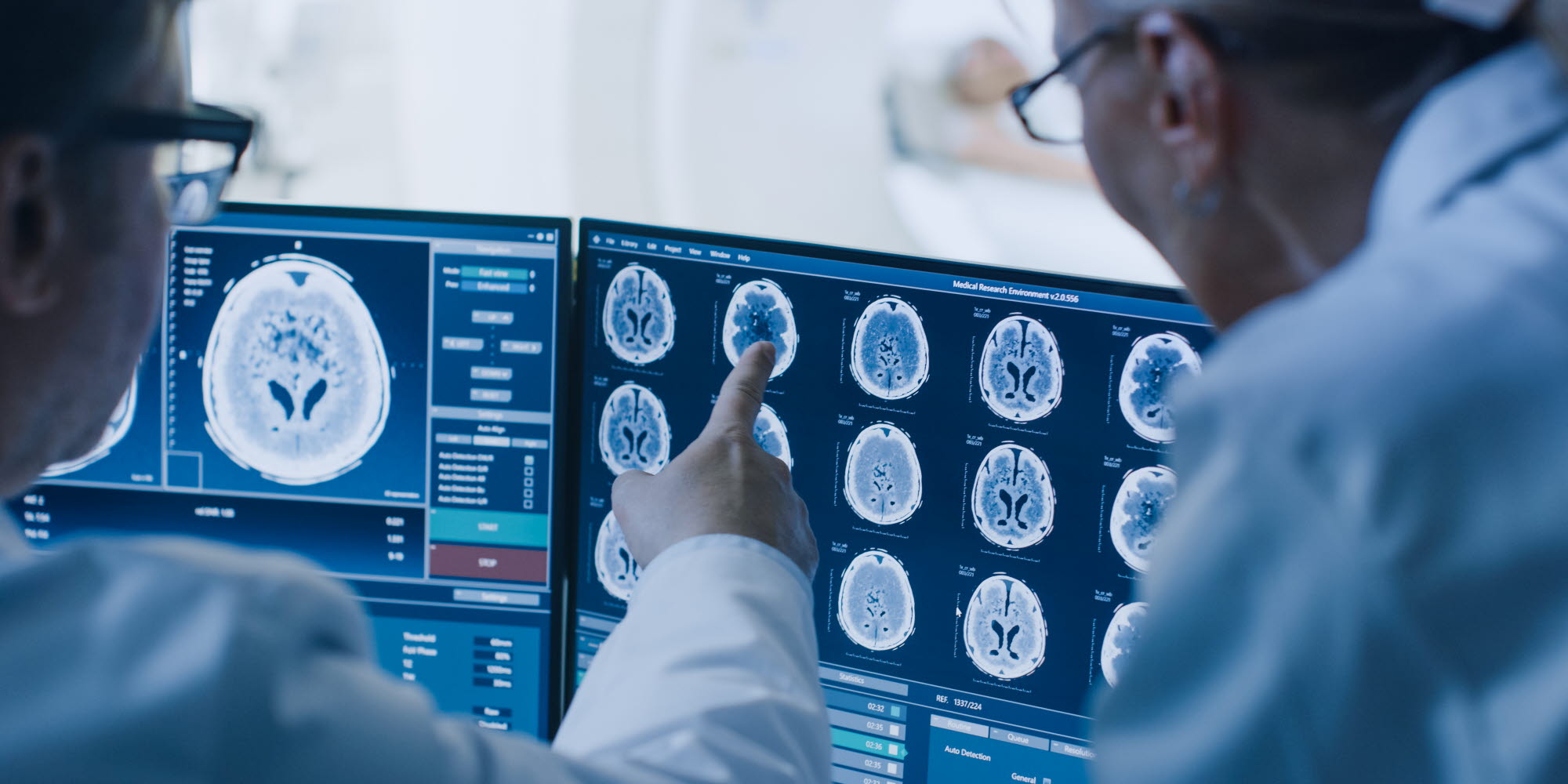-
Neurodegenerative disorders: Mild cognitive impairment, Alzheimer’s, and Parkinson’s
-
Neurodevelopmental disorders: Autism spectrum disorder, attention-deficit/hyperactivity disorder
-
Neuropsychiatric disorders: Anxiety, major depressive disorder, schizophrenia
Revolutionize disease screening and treatment with eye tracking
Eye tracking offers a window into disease development by capturing subtle changes in eye movements that are associated with various brain and eye disorders. This non-invasive technique opens new avenues for early detection, tailored interventions, and personalized treatment, marking a significant leap in healthcare practices.
Timely and unbiased assessment
Neurological, psychiatric, and eye disorders can manifest in cognitive and oculomotor function impairments in viewing behavior. Eye tracking can detect these issues early on, enabling further exploration and timely intervention.
Eye tracking in clinical research studies
Clinical research studies reveal eye movement biomarkers in various clinical conditions.
Eye tracking is used in the assessment and screening in these fields:
-
Neurological conditions: Concussion, traumatic brain injury
-
Ophthalmology: Visual field assessment, glaucoma, strabismus
-
Language disabilities such as dyslexia
Effective and personalized treatment
Eye tracking solutions allow efficient and easy monitoring of the treatment and immediate feedback on intervention success. Incorporating eye tracking into treatment and rehabilitation programs allows for personalized, data-driven methods that cater to individual needs and progress.
Eye tracking in treatment and rehabilitation
Various clinical conditions can benefit from eye tracking-based treatments.
Eye tracking is used to aid treatment and rehabilitation in these fields:
-
Neurorehabilitation: Stroke, traumatic brain injury
-
Speech and Language Treatment
-
Autism spectrum disorder (ASD) interventions
-
Attention and concentration training: Attention-deficit/hyperactivity disorder
-
Physical rehabilitation: Motor coordination and movement control
-
Psychiatry: Major depressive disorder, bipolar disorder
-
Ophthalmology: Lazy eye, amblyopia
Benefits of eye tracking
The advantages of using eye tracking in disease assessment and treatment:
Early Detection
Eye tracking can detect subtle changes in eye movements that might indicate the presence of diseases at early stages. This enables timely intervention and treatment.
Objective Measurements
Eye tracking provides objective, quantifiable data, reducing reliance on subjective patient reports and improving the accuracy of the assessment.
Personalized Therapy
Analyzing each patient’s gaze patterns facilitates tailored treatment plans and monitoring the effectiveness of an intervention.
Non-Invasiveness
Eye tracking is non-invasive and well-tolerated, minimizing patient discomfort, especially compared to more invasive diagnostic techniques. Suitable for small children or elderly populations.
Flexibility in disease assessment
Specific tasks can pick up different areas of impairment, including thought process, cognition, executive control, and oculomotor control.
Related content
Fueling equity in education with EdTech
In this success story, we cover the journey from research and innovation to commercialization of EdTech startup BrainLeap Technologies, and how they have leveraged scientific findings in their game-based attention training solution.
Using AI to close the literacy gap
Discover how Lexplore has systematized reading-assessment research findings in an AI solution with Tobii to translate gaze into reading skills.
Eye tracking — the future of medical assessments and treatment
Due to the significance of eye movement patterns in medical research, eye tracking has a vital role to play in the detection and treatment of some of the world’s most prevalent diseases. Inventive companies are capitalizing creating new tools, changing healthcare for the better.
Related products
Tobii Eye Tracker 5L
Designed to be mounted on any screen, this plug-and-play eye tracker with USB connection delivers real-time data streams including gaze point, eye position, pupil diameter, user presence, and head pose.
Tobii IS5 Integration Platform
A compact, multimodality platform, bringing superior eye tracking functionality as well as biometric performance data to machines and applications.
Our support in your healthcare innovation journey
The journey from concept to realization in eye tracking for medical assessment and treatment involves transforming innovative ideas into tangible solutions and scalable businesses. Tobii is poised to facilitate this journey by leveraging our expertise in cutting-edge eye tracking technology, strategic business development approaches, and strong market presence.
Curious about using eye tracking in healthcare?
Fill out the form and one of our experts will reach out to you.
